“FEMA has took over this parish. We know what we need to do and how to do it, but you know, what can we do when somebody else is calling the shots?”
-Buffy (November 2005)
Katrina tore into the Gulf Coast in 2005 bringing fright and ruin and heartbreak. It ripped open the collective American psyche and, for a brief moment, left a void. That space within fresh disaster is quiet, and in its stillness we breathe the rawness of impermanence, and we wonder if anything can ever be mended back. None whose lives were changed by the horror of Katrina needed anything more to endure beyond the shock and grief of the disaster. They needed every possible comfort, every shred of understanding a rescue could lend. Instead, the system deployed to secure their recovery and help them heal piled on bewildering new hardships, and in the years to come, increased the suffering of survivors and prolonged the time it took them to get their lives back in order.
The storm and levee breaches left a “terrifying wilderness of ruins”i that constituted the largest residential disaster in US history,ii with damage or destruction to more than 500,000 homes in Louisiana and countless other structures in a 90-square-mile area. Every one of the 300 family members in my research experienced profound material loss from Katrina. iii

But there was more than material loss. Invisible blows also threatened the group’s connective tissue formed from generations of cultural adaptations and traditions. In both visible and invisible ways, the community of African Americans I studied suffered at a collective level as a “wounded culture.” Meanwhile, the work to recreate communities was placed in the hands of recovery authorities like FEMA and Road Home.iv Institutional authorities rarely recognize the presence of their own assumptions or the problems those assumptions pose for those unfamiliar with them. We need not attribute malice to those who intended every good. But at the same time, we do need to become aware that authorities carry with them their own institutional culture, systems, procedures, values, and expectations, and for purposes of this discussion, I am calling these authorities the “rescue culture.”
What follow are some of the stories that demonstrate how post-Katrina communication between cultures failed and, in failing, undermined recovery. In this piece, I introduce three types of communication failure: “the unheard local knowledge,” “the non-responsive response,” and “the black hole.”
* * *
Buffy is a soft-spoken 45-year old man who lives within a 15-minute drive of scores of family members in the bayou-rich area of St. Bernard Parish, just southeast of New Orleans. He is hard working and, as a black man in a mostly white parish, has had experience taking things in stride. Buffy’s cousins and aunts and uncles respect his carpentry skills and his role as a head cook at large family gatherings. He is one of the few family members with a parish government job, a job with the road crew that he had been promoted to supervise not long before the storm.
Buffy did not evacuate with his family to Dallas before Katrina. The hurricane season is serious, but when the caravan of cars headed for Texas and shelter with cousin Connie, both Buffy and his cousin Terb stayed put out of a sense of obligation. Terb was a hospital tech who, with the other staff who stayed, moved the sick to safety. They endured four ghoulish days of panic, lack of food and supplies, and death.
As a parish employee, Buffy reasoned that staying was the only responsible thing to do. He wanted to help residents who lacked transport or were elderly or handicapped. He had stayed before many times, but this time, the experience proved terrifying and left him with haunting memories. Not until years later did Buffy feel comfortable enough with me to share a few of those horrors, stories I will recount in the book I am writing about this research.v All I knew then was that unexpectedly sudden and massive storm surges put Buffy at extreme risk as he helped the helpless find their way to safety. When he talks about the days-long wait for relief from their helpless perch on a rooftop, Buffy’s face tells the story—his mouth works as his eyes narrow. He shakes his head in disbelief. But with a deep breath later, he allows the authorities some slack. After all, he says, they had far more trouble on their hands than they knew how to handle.
Buffy: “Don’t You Know What I Do?”
Buffy’s own effort to rescue others makes clear his sense of obligation and loyalty to his job and to the parish. So once the floodwaters had receded and it was time to begin cleanup, Buffy’s role as road crew supervisor seemed straightforward. He pulled together the few crew members he could, and together they undertook a big cleanup of the “yard” (Buffy’s term for his job site) where their equipment was stored. They sorted the odd fragments of plastic, concrete, iron, and metal from machine parts, broken and uprooted trees, and debris that had been blown in by the wind. But after they had it sorted, collected, and dumped, all their progress got unceremoniously reversed by FEMA. In March, 2006, Buffy told me,
“We can’t do street repairs, clean up trash, can’t do much of anything. We could clean up this whole area, all the trash. We tried that—we cleaned up our area, our yard where we work at, we went to the landfill to dump it, where all the trash at. FEMA made us bring it back, put it back on the ground, and they have another crew come over and inspect it to pick it up.”
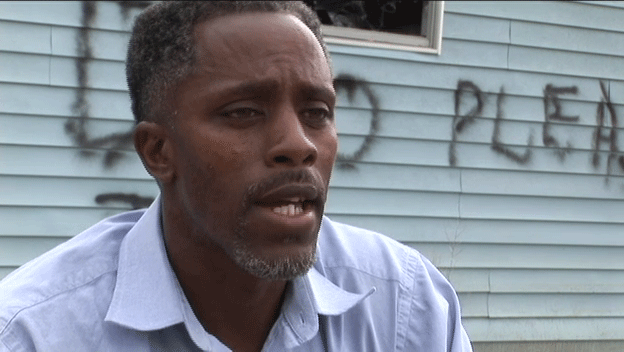
Buffy didn’t understand why FEMA blocked his initiative, why they couldn’t recognize the common sense of his effort. By FEMA’s own account, some 3.3 million cubic yards of debris needed collecting in the parish and more than 12,000 homes and other structures needed demolishing.vi Surely a little help from local residents would be welcome. For their part, FEMA’s envoys charged with cleanup and recovery used a playbook filled with top-down rules and favored, no-bid contractors. They had no idea who Buffy was or how he was capable of helping. FEMA arrived and took over without knowledge of local people, their community, or how to tap into their strengths. They did not know that most people in this part of Louisiana claim membership in large family groups and are used to taking care of themselves through their own family networks. Instead, the government personnel in charge seemed to import everything they would use to do their job, including assumptions about what people needed, procedures for getting things done, lists of approved contractors, and even the language for how to talk to people and how to oversee a disaster zone. Buffy assumed his work would be a desirable aid in the process of cleanup, but FEMA wasn’t listening.
Cultural Insiders with No Standing
When FEMA turned back Buffy’s effort to clean up, they trivialized his initiative and undermined his sense of potency in his home environment. The rigid adherence to a set of rules developed elsewhere signaled the beginning of a chronic mismatching of expectations between local residents and the agencies charged to help them. Over the first year of cleanup, demolition, and trash hauling, FEMA repeatedly dismissed the efforts of other cousins in the family, who, like Buffy, were skilled workers and accustomed to taking care of things themselves. No black residents of the parish were ever awarded contracts from FEMA to help in this work, and according to the men I interviewed, the contracts went to people who weren’t even from Louisiana. How could local talent, the pride of local residence and the financial need for work suddenly carry so little value in the parish’s post-disaster setting? Buffy chafed at the situation:
“We’re not used to that, you know, because they say we taking money from the contractors.”
FEMA’s personnel on the ground remained unresponsive and non-negotiable, more concerned with maintaining an efficient central command than with using the energies of the communities it was charged with helping. The communication failure in this situation arises from a pattern in which authorities did not “hear” or “recognize” local knowledge.
Negotiating the Divide in Dallas: Connie as Culture Broker
The experience of Buffy and his male relatives demonstrates how the seeds of miscommunication take root in disaster recovery efforts immediately and if not addressed, can grow from there into a thicket of more and more failures and disconnects. Yet these problems are neither necessary nor inevitable. Perhaps what Buffy and FEMA needed to help them cross the divide was a person or team of translators. In fact, Buffy’s evacuated relatives had such a person to help them out—Connie, a relative who had grown up with the family and moved to Texas with her husband. For four months in Dallas, I witnessed first hand the value of Connie’s role as a “culture broker.” Then, after family members had returned to their home communities of St. Bernard Parish where life in FEMA trailers would drag on for years to come, I witnessed an ongoing succession of struggles in dealing with FEMA and Road Home, dealings people had to navigate without benefit of a Connie. Ultimately, I came to realize that Connie’s role in Dallas could provide a model for a new paradigm, one that would increase the effectiveness and responsiveness of recovery authorities and give local people in the wounded culture a reason to trust the outsiders. The Dallas story demonstrates how a “culture broker” can work.
In 2005, Connie was 40 years old and had lived in Texas 20 years. She was cousin to some, aunt to others, daughter or granddaughter to others, sister to others who arrived at her home, a natural refuge for the family. Huddled around Connie’s TV in the days following Katrina’s landfall, family members learned that St. Bernard Parish had taken the brunt of the storm. There would be no quick returning home. Suddenly, they needed everything basic to living: clothing, medical supplies, prescription glasses, and lodging for the months to come. They had to tend to the sick, the elderly, the children. They had to register with FEMA to get a victim ID number, contact insurance companies, and get on a waiting list for a trailer.
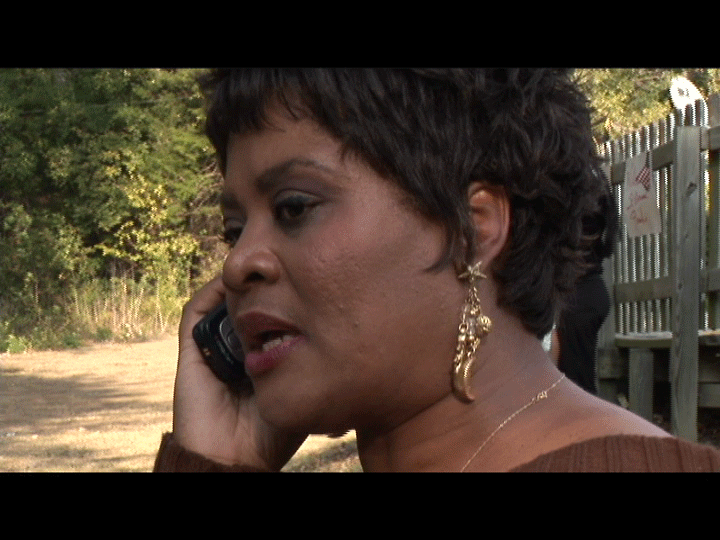
Connie could help her family with all of these jobs. She was one of them and recognized their needs. She got on the phone with FEMA, Red Cross, local housing authorities, and a host of private landlords. She worked to get her family members into decent housing. In a hundred ways, every day, Connie smoothed the path and “rescued” her family from the inside out. Never once did they feel misunderstood because Connie mediated the disaster for them. She understood their language, their attachment to the parish, their ritual feasts, their reliance on each other, and their strong faith. She knew how to give them comfort.
At the same time, Connie had been educated in the language and skills of the world beyond the bayou. She knew how to communicate with bureaucracies. She understood from years of practice with institutions that there is a way to talk to such people, to ask the right questions, and know when to press. Connie managed all the communication with the bureaucracies charged to help her relatives—getting registered in the FEMA database, working to locate other family, collecting rent payments, requesting short-term credit cards, and filing the paperwork needed to get a FEMA trailer. She also called upon her extensive network of “weak ties,”vii that is, ties to people she didn’t know well, but could ask a favor of. With the help of these differently positioned secondary friends from work and church, Connie secured an astonishing array of resources: housing, clothing, personal supplies, furniture, and counseling. According to Connie, God had sent her all these relatives so that she might have a chance to help them and regain a cherished role in the family she had left 20 years before. This belief and her unbounded love of family led her to become a warrior for their cause, sparing nothing to make things work.
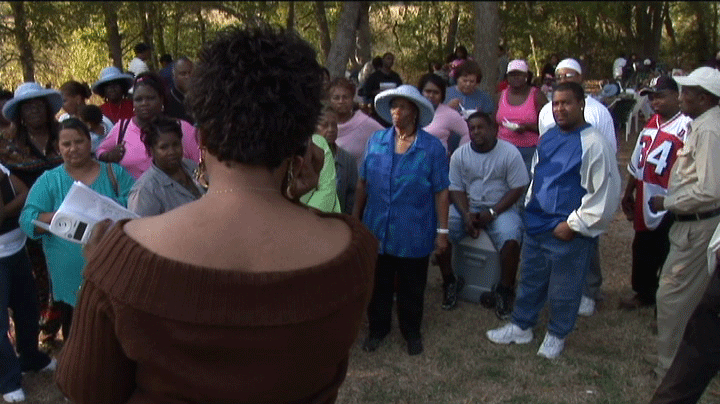
Of course, Connie could not solve all the problems her family faced. She couldn’t take away the shock and stress of damaged or destroyed homes. She couldn’t help them secure the familiar foods they needed for emotional comfort, and she couldn’t duplicate the home churches where her relatives had worshipped together for generations. But she could provide safety and material aid. She could also supply emotional comfort with both her large, modern kitchen, where family members could prepare their own gumbo, and her sprawling backyard, where they had the space to gather and talk. Everything from home on the bayou that could be replicated was replicated in Dallas.
The example of Connie’s role is instructive: she supplied a bridge over the communication divide between the cultures of the wounded and the institutions assigned to recovery. She lived outside the wounded culture, but her knowledge and experience positioned her to recognize what cultural comfort looks like and to maximize its availability. Then, her family went back home.
The Short-lived Euphoria of Being Back Home
At first, when Connie’s sister Robin returned to St. Bernard Parish after 10 months in Dallas, she was euphoric, like everyone else.
“It’s just so good to be back, where people know who you are and you don’t have to say something 23 ways for them to understand what you mean or even what you’re trying to say. That’s home. I don’t care about the house, I don’t care about the car. I just wanna be home because that’s where I feel good. It’s comfortable.”
Robin’s relief of being back home “where people know who you are” and where she felt recognized and understood points up the insularity of her family system. Members of the 300-plus family rarely traveled outside southeast Louisiana. That limited experience with the outside world and their habits of high-context communication viii intensified their difficulties in speaking to disaster authorities once they got back home.
Robin did not realize that although people in Dallas spoke differently and had trouble understanding her accent, she had been spared a more painful indignity—not being understood in her own home environment, now occupied by FEMA and its alien culture. In Dallas, Connie had brokered all that unfamiliar communication for Robin and the rest of the family. Once home, Robin and her relatives faced a harsh and unexpected irony—the people she could communicate with could not help her. The people who could help, did not understand her.
Robin: “Don’t You Know What I Need?”
As the first anniversary of the storm approached in August 2006, Robin and her family could not escape a bitter reality: the home environment they had longed for during their dislocation was gone. Forever. Where the modest character of small brick and wood homes had anchored a people’s sense of community, there were now rows and rows and miles of disfigured homes: broken, collapsed, but not yet demolished, sometimes invaded by wildly overgrown vegetation. Big heaps of debris crowded the streets with the ghastly remnants of individual lives—furniture, appliances, beds and personal belongings, purged from the guts of homes.
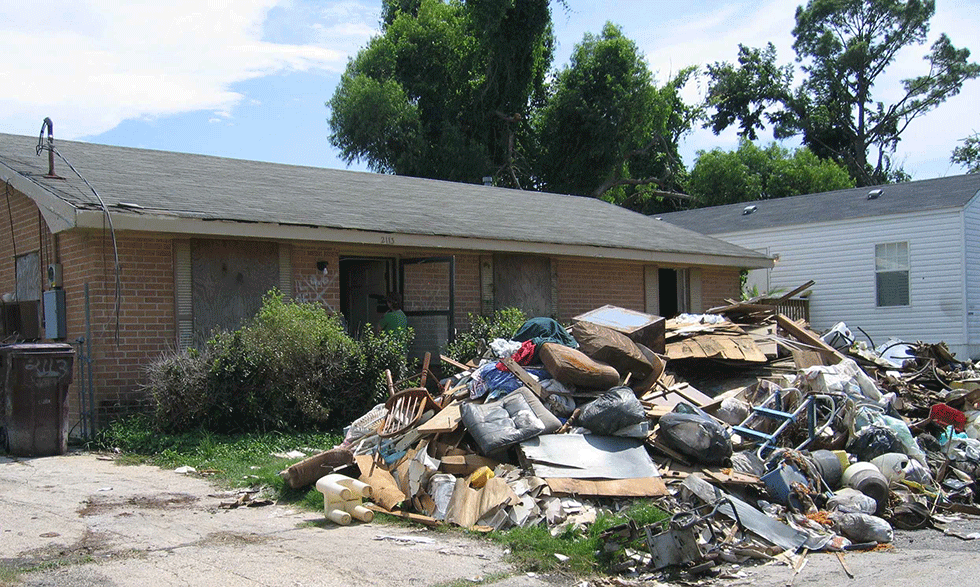
To patch up this emotional landscape of hurt, FEMA brought its promise of human solutions— tens of thousands of tiny white trailers. For Robin, the “itty bitty” FEMA trailers seemed more an emblem of a faceless, shrunken future than a cause for hope. But it was all there was. There was no nearby grocery store, cleaner, pharmacy, bank, post office, or restaurant. The local churches had been destroyed, and attending Sunday services required a drive into another parish to an unfamiliar congregation.
Into the second year after the storm, unsettling realities from the previous months shifted from background nuisances to stressful, preoccupying concerns. For Robin, the fact of her powerlessness started sinking in during the fall of 2006 after she had taken on two jobs to try to keep herself and her daughters afloat financially. Her repeated calls to FEMA went unanswered (the non-responsive response), and her confidence about the future began to dissolve.
“My trailer is leaking right over the big bed. I had to put pots in the middle of the bed. I’ve called them, but they never come. I have a work order, they promised to come in 72 hours. Nothing.”
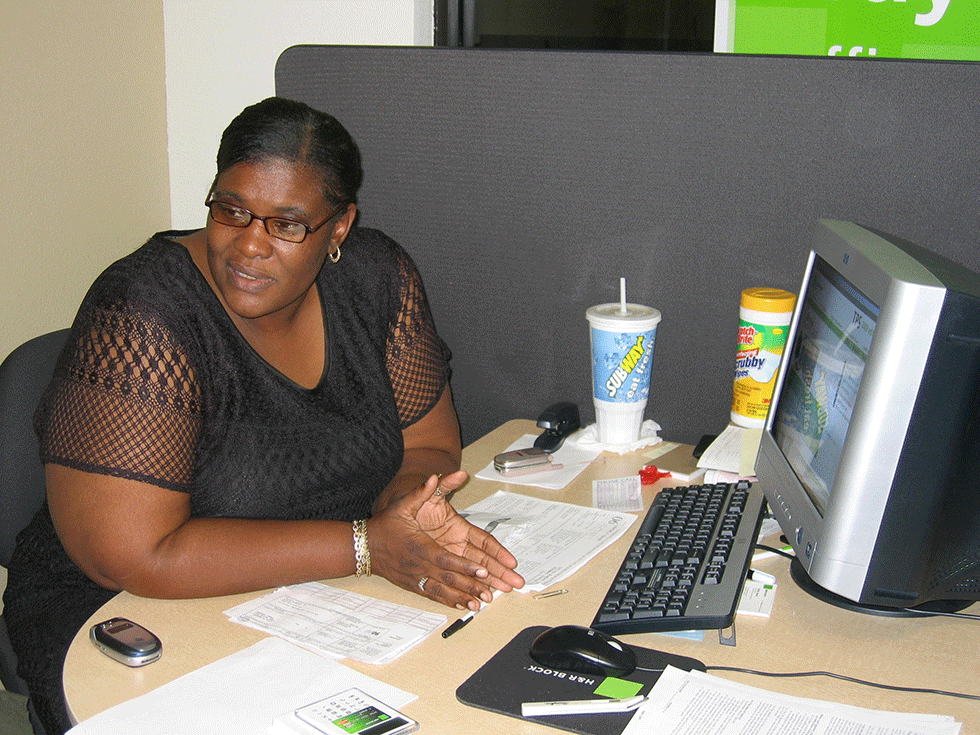
By spring 2007, Robin’s exasperation with her trailer had spilled over into her whole life:
“They keep saying everything is getting better. But it’s not true. Half the houses are still not gutted out because they don’t have trailers to stay in to get the work done. You’re working and you still can’t do anything. Men not feeling like men anymore. We came back as soon as we did because we wanted what we used to have. What we used to have was comfortable. What we have now is misery. I’m miserable.”
The spring of 2007 brought no relief, and as another hurricane season loomed, the sense of despair deepened. The rescue culture had no idea of the collective (and invisible) suffering they had made worse by their lack of attention to the fundamental needs of a black, bayou community. Communication failures were not simply additive in their impact—the repeated instances of these problems across family members compounded the collective sense of alienation and frustration.
Katie: “Don’t You Know Who I Am?”
A communication “black hole” occurs when the words one says to a bureaucrat or other authority simply disappear into the void. Black holes in this sense are especially common when stylistic barriers exist in how people in an exchange use language. Members of the bayou family are native English speakers. But their strong inter-reliance on each other, their high-context form of communication, their unusually limited travel outside the parish, and their autonomy from government aid all put them at a serious disadvantage in speaking effectively to representatives from large, impersonal bureaucracies. The communication style recognized within institutional hierarchies of government takes practice to master: to articulate one’s needs in a concise way, to ask the right questions at the right time, and to push for answers with force but diplomacy tends to demand either the use of front-end credentials or linguistic agility that authorities on the other end will recognize as worthy of respect.ix
Katie was Buffy’s favorite aunt; she was Connie’s “nanny” (godmother). She was mother to Terb, Roz, and Nell, and grandmother to a growing tribe of children who called her Bammy. I met Katie in Dallas and quickly observed how she filled the room with her buoyant spirit and easy laugh. Without ever breaking a sweat, she cooked the most food I had ever seen come out of a single kitchen. Katie was fiercely devoted to her family and her home community in lower St. Bernard Parish. She drew people to her through her storytelling and creole cooking. Few could rival her gumbo or stuffed bell peppers. On Sundays, she had always cooked enough to feed dozens after church.
Few who did not know Katie would have guessed that she wore a prosthetic leg. Her movement was so normal and her personality so vibrant, it was easy to miss the slight limp. While she was still living in Dallas, Connie had helped Katie order a handicapped trailer to put on the lot where her home had been. But when FEMA called months later to say she could go home, the trailer was wrong. Never mind, she told them, she’d take what they had brought because she could not wait another day to get home.

But just a few weeks after getting installed in the trailer, Katie fell down the rickety metal steps to the front door. The injury to Katie’s leg, which never properly healed, reversed 60 years of unassisted walking.
After her fall, Katie could either walk with crutches or use a wheelchair. She called FEMA; her daughter Nell called FEMA. Both begged for the handicapped trailer. Weeks later, a carload of six FEMA employees came out to take pictures of the step and prepare the necessary paperwork for her new trailer. Nell looked at the men in disbelief and cried out, “Why you want a picture of the step? You see she ain’t got but one leg. What more you want?” The men left. Months passed. No word, no handicapped trailer. Finally, in July of 2006, they delivered the trailer along with the hope that living there would be temporary. Indeed that summer, nearly a year after the storm, Louisiana’s Road Home program began accepting applications. Road Home was FEMA’s designated state authority charged to evaluate these applications and allot compensation to eligible homeowners from the pot of $7 billion of federally allocated funds. Road Home would pay homeowners up to $150,000 for the cost of their damaged or destroyed homes, minus the amount paid by insurance.

One humid summer day nearly two years after Katrina, I stepped up into Katie’s trailer. She was sitting as she often did, sunken down on the end of a narrow, cream-colored couch with her head turned to watch the small TV perched at the top of an étagère straddling the opposite corner. The physical strain of living in a small container designed for a weekend hunting trip was showing, even if she rarely complained.
What do you hear from Road Home, I asked, knowing full well the answer, having asked the same question every few weeks for months. “Nothing. I don’t hear nothing.” I asked her if she had tried to call them. She had been calling every week lately. And every time, she said, they told her the same thing, that she was in the “verification phase.” Well, what is that, I asked? “Nobody can explain it—it’s just what they say.” I knew it was time to figure out what was happening, so I asked her if she would mind calling them while I was there so I could listen.
Katie pulled herself up and took the crutches I handed her. She was fiercely independent, and even though she could have easily pointed me to the folder on the pantry shelf, she stood, hoisted her weight with the crutch, and then hopped past the couch to pull the file off the shelf and up under her arm.
“You know, every time I call, it’s a different person. I try to get the name of somebody and then the next time, nobody heard of that person. You can’t get nowhere with these people.”
She dialed the Road Home number she knew by heart and waited for the recorded voice. She held out the phone so I could hear the message, “Remember, Louisiana wants you to come home.” She glanced at me, shaking her head. It took another 5 or 6 minutes to get a human voice.
“Hello, this is Katie Williams,” she offered politely. “My case number is 06HH087563. I’m calling to find out where my case is and how much longer I got to wait.” Several minutes passed before the agent came back. “I’m showing you are in the verification phase, Ms. Williams.”
“Well, how long is it going to take to get out of there?” It had been more than a year since Katie had submitted her paperwork for the Road Home program.
“We have no information about that. But it will be as soon as possible. Thank you for calling. Is there anything else I can help you with?”
Wow, I thought. The Road Home people really know how to clear callers off the phone lines. Polite and completely non-committal, all in the flow of a single sentence. But I knew their tricks. I had learned for myself that bureaucracies were full of ordinary people who follow the rules they are given. The clerk gave Katie the only answer she had.
“Katie, what if I called them just to see if I could get somebody else who might tell us more?”
How could someone so important to so many be so easily dismissed, I wondered. “You can’t talk to them,” she said. “Has to be the name on the file. Nobody else. “Okay, then,” I said, “I’ll pretend I’m you.” She mustered a smile and handed me the receiver.
Over the course of the next 45 minutes, I worked my way up four levels of clerks to a top-level supervisor who finally gave me what I was looking for. “I need to understand exactly what the verification phase entails,” I said politely. For the first time, the person I was talking to actually left the phone to search for Katie’s application. She came back with a sheepish apology: “I’m very sorry, Ms. Williams. There is nothing in your file.” “What?” I said with alarm. “That isn’t possible. Back in November of 2006, my husband and I met with your people, and I handed them all my documents. (Katie was pointing to her inch-thick file folder) That was seven months ago. Where did those go?”
“I can’t say, Ms. Williams. I can only say that they aren’t there now.”
Katie and I were both in shock. Before I returned to Colorado that next day, I took her folder, copied all the documents, and once I got back home composed a stern memo to fax along with all the documents. Three days later, Katie called me to say she had been contacted by Road Home and moved out of the verification phase. They had assigned her a case manager, and she would be getting her check soon.
But the misery wasn’t over. When her check arrived late that summer, it was dramatically less than she expected, just $25,000. She had used the money she got from her insurance to pay off the mortgage on her demolished house. Connie stepped in to file an appeal, but by early December 2007, Katie got the word that the appeal had been denied. Two weeks later, Katie suffered a massive stroke, leaving her without speech and without the ability to walk on crutches as she had done since her fall. Katie died three and a half years later.
Conclusion
The communication failures of “the unheard local knowledge,” “the non-responsive response,” and “the black hole” illustrate some of the degrading effects that cultural divides can produce, especially when a wounded culture and the rescue culture are asymmetrical in power. Yet there is a bright spot in this painful saga, a way to see how things might work if we proceeded with more awareness and applied a little imagination. In this story, Connie’s knowledge and experience allowed her to straddle cultures and lighten the burdens for those who needed so much help. In every disaster, there are people who could be tapped to work with agents of recovery—people who understand local cultural systems and values, and who could help broker communication with outsiders. There are also anthropological studies of most every disaster-vulnerable area on the planet that could be synthesized in advance and used as a local roadmap. These are possibilities that Connie can help us imagine. And, as poet Rita Dove once said, it takes imagination to make possible other realities.
“You have to imagine it possible before you can see something, sometimes. You can have the evidence right in front of you, but if you can’t imagine something that has never existed before, it’s impossible.”x
What Anthropology Brings to the Study of Disaster
The long arc of time needed to reclaim a familiar, routine life after disaster dramatizes a key insight—only by documenting the full expanse of time people need to resettle can we see how the process unfolds. For plenty of people in southeast Louisiana, the experience of recovery from Katrina took longer and hurt worse than it had to. For the family I came to know, the movement toward settling into a new reality was neither linear, nor steady, nothing like the way a bone heals. Alien logic and inflexible systems piled on new sources of exhaustion and frustration and added insult to hardship, leaving people with the sense of having lost control of their lives and futures.
When I reflect on what I have learned over these last seven years, I ache for the people whose lives and needs remained opaque to authorities. Perhaps the agents of recovery made no attempt to understand local needs or the resourcefulness of local people because they could not imagine a way to work with these needs and also maintain control. A lack of awareness, a lack of curiosity, and a lack of imagination effectively prolonged suffering. With imagination, compassion, good sense, and experience, I believe we could discover that there is another way, a better way, to help the wounded recover from collective devastation.
Katherine E. Browne, Ph.D. is Professor of Anthropology at Colorado State University. Browne’s research has focused on French Caribbean societies like Martinique and New Orleans. She has published two books, Creole Economics: Caribbean Cunning Under the French Flag, and Economics and Morality: Anthropological Approaches, and produced two documentary films: Still Waiting: Life After Katrina (broadcast on PBS stations) and Lifting the Weight of History: Women Entrepreneurs in Afro-Creole Martinique (broadcast in French on French TV and French global satellite channel, TV5). Browne is currently preparing a book about her post-Katrina research with the large bayou family discussed here. Her work has been funded by numerous grants from National Science Foundation and she is currently president of the Society for Economic Anthropology.
Acknowledgements
I want to thank the members of this beautiful bayou family for sharing their struggles and stories with me over the years. Their wisdom and courage have inspired me to work from the heart and to aim that work toward a broader public.
Notes
[i]Wallace (1956:127)
[ii] Plyer (2008)
[iii]My research with this bayou family from the lower, eastern part of St. Bernard Parish has spanned seven years following the storm. The first two of these years focused on producing a documentary with filmmaker Ginny Martin. Our film, Still Waiting: Life After Katrina was broadcast on PBS stations nationwide. My research continued for five more years, through 2012, after the film’s initial broadcast.
[iv]FEMA is the Federal Emergency Management Agency.The Road Home program was put in place and funded by the US Housing and Urban Development (HUD) and administered by the state of Louisiana .
[v]The working title of the book I am writing is Standing in the Need: A Bayou Community’s Struggle After Katrina. The book is part of the SSRC’s Katrina Bookshelf being published by University of Texas Press.
[vi] FEMA news release dated April 30, 2007. http://www.fema.gov/news-release/2007/04/30/st-bernard-parish-benefits-fema-funds.
[vii]See Granovetter, “The Strength of Weak Ties,” 1973. Connie’s family members had few if any weak ties.
[viii]High-context communication tends to characterize speakers who communicate primarily within their own highly dense social networks, making verbal shorthand a common practice (Hall 1976). People from this area are not accustomed to having to explain themselves to outsiders.
[ix]For example, Cushman, The Struggle and the Tools (1998).
[x]Rita Dove, was former poet laureate of the United States. This quote comes from an interview with her in 1994.
References Cited
Cushman, Ellen. 1998. The Struggle and the Tools: Oral and Literate Strategies in an Inner City Community. Albany, NY: State University of New York Press.
Dove, Rita. 1994. http://www.english.illinois.edu/maps/poets/a_f/dove/onlineinterviews.htm.
Granovetter, Mark. 1973. “The Strength of Weak Ties,” American Journal of Sociology 78, no. 6, 1360–1380.
Hall, Edward T. 1976. Beyond Culture. New York: Anchor Books.
Plyer, Allison. 2008. “Four Years after the Storm: The Road Home Program’s Impact on Greater New Orleans.” Testimony presented to the House Subcommittee on Housing and Community Opportunity on August 8, 2008 by Deputy Director of the Greater New Orleans Community Data Center.
Wallace, Anthony F.C. 1956. Tornado in Worcester. Disaster Study Number Three, Committee on Disaster Studies, National Academy of Sciences—National Research Council.



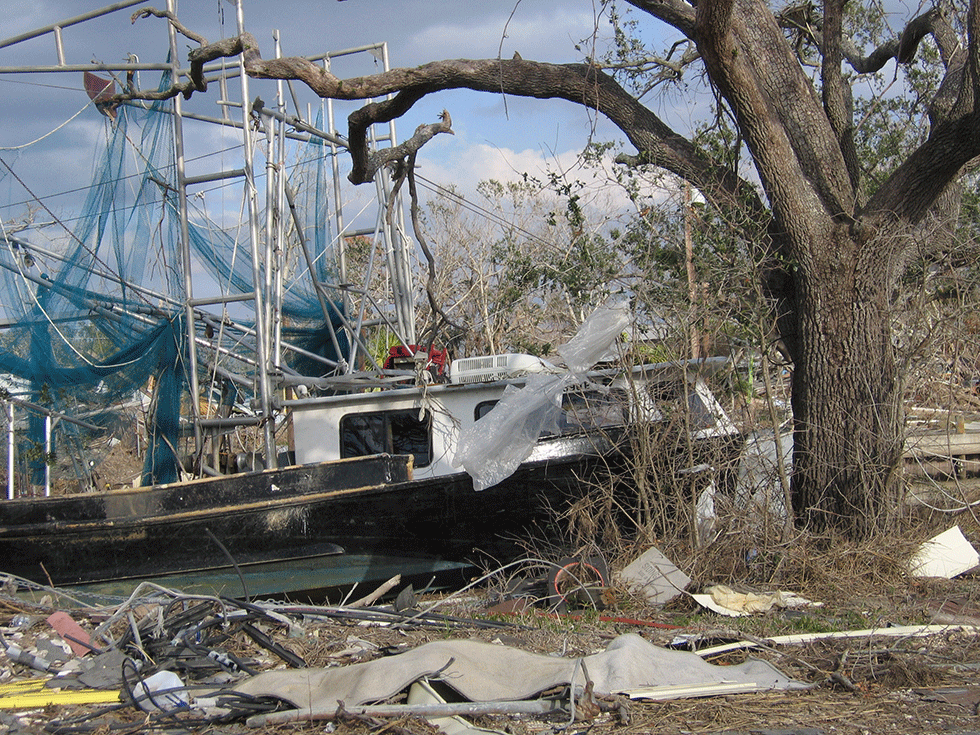
One Response
Kate,
This is excellent and disturbing. I think you should send it to the Wall Street Journal and maybe they will publish it on their op-ed or their opinion page. It deserves to be known.
Mom ( your #1 admirer)